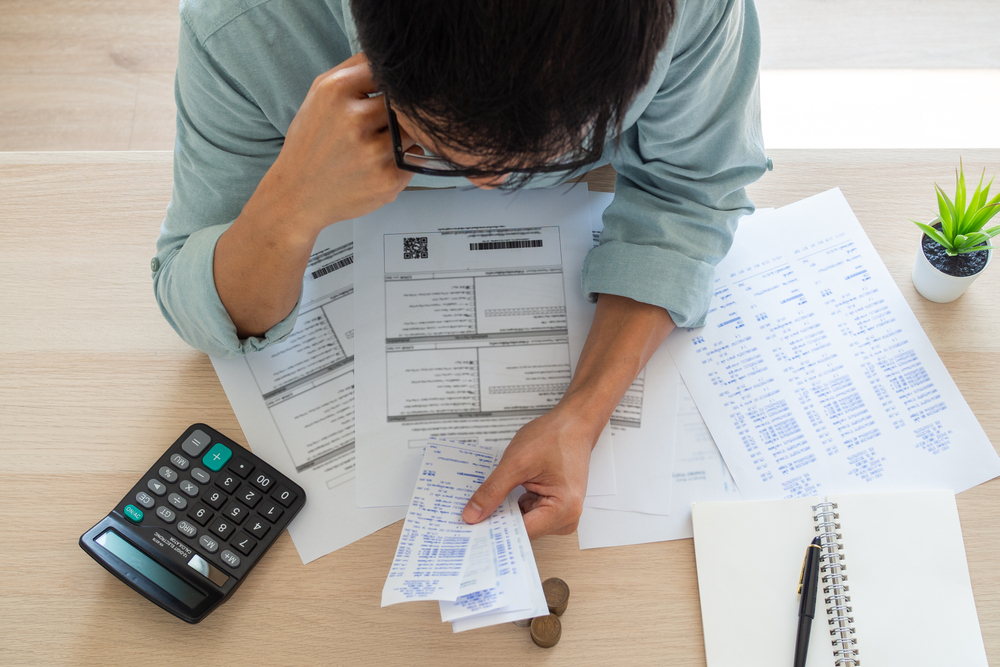Save Money or Pay off Debt? What’s More Important?

Should you save money or pay off debt? For total financial health, you want to carry little debt and have savings for emergencies and retirement. But few of us get off to a perfect start. If you’re looking at a pile of debt and no savings, which problem should you tackle first? The answer depends on several factors.
What kind of debt do you have?
Your debt probably includes revolving accounts like credit cards or lines of credit that you can use, repay and reuse. And you likely have installment accounts as well. These might be auto financing, student debt or personal loans that you repay over time. You don’t reuse installment accounts.
Paying down the balance of an installment account or mortgage doesn’t usually affect your minimum payment. And in an emergency, you can’t go to the lender and ask for your extra payments back. On the other hand, paying down a revolving balance generally reduces the minimum monthly payment.
Savings accounts pay very low interest rates as of this writing. And the average credit card interest rate is about 17% according to the Federal Reserve. Directing your funds to pay down the accounts with the highest interest rate can help you accomplish two things: save on interest charges and reduce the required payment if you experience an interruption in income.
Conclusion? In most cases, you should pay off high-interest revolving debt before saving. But not installment debt with low interest rates.
Related: Good Debt, Bad Debt (When Personal Loans Are a Good Choice)
Manage your debt
There are two ways to attack revolving debt — the “snowball” plan and the “waterfall” plan. The snowball plan means paying off your smallest balance as fast as you can. Then you take what you were paying on that debt and increase what you pay on your next-smallest account until it’s gone. And so on. The snowball gives you a fast start to resolving your debt problems.
The waterfall method saves you more in the long run. With the waterfall, you attack the account with the highest interest rate first. Once it’s paid off, you attack the one with the next-highest rate, and so on.
Replace your debt
Replacing revolving accounts with a personal loan or home equity loan may help you save money, improve your credit rating and simplify your finances. Do this only if you know that you won’t carry balances on your cards again. Or you’ll make your situation worse.
- Personal loan interest rates are often lower than credit cards
- Personal loans have pre-set terms, usually from one to five years. You know when you’ll be debt-free if you stop carrying credit card balances
- You can replace several payments with one
- Personal loan interest rates and payments are usually fixed, making it easier to budget
- Zeroing out your credit card balances can increase your credit score
If you have home equity, you may be able to use it to replace high-interest debt. But home equity loans often have low rates and minimum payments, but very long terms. You may end up paying a lot more interest by stretching out your repayment, even if the rate is lower. And you can lose your home if you default. Home equity can be a good choice for larger amounts, and you can minimize the cost by paying your loan off as fast as possible.
Once you pay off your higher-interest debt, put that monthly payment into savings. You’ll be on your way to long-term financial health.
Related: Personal Loans for Debt Consolidation
What’s your emergency plan?
In case of a financial emergency, you need either savings or access to credit. In general, it’s safer to have emergency funds in the form of savings rather than counting on being able to borrow your way out of trouble. Credit limits can be cut or accounts canceled. And borrowing raises your monthly payments when your income may be lower.
Emergency funds should ideally be enough to cover three-to-six months of expenses.
Start by determining your needs. If you spend $2,000 a month for essentials, plan on saving or being able to borrow $6,000 to $12,000 in case of a major expense or interruption in income.
Next, calculate how much more you need to save or be able to borrow for emergencies. If you have an unused $3,000 line of credit, and $1,000 in the bank, you could apply for a $2,000 increase in your credit line. Or you can divert income into savings until you have $3,000 in the bank.
Which option is better?
Try both. If you qualify, apply for a credit line or an increase to your current limit. Do this only if you know that you won’t use the extra for anything that is not a true emergency. And every month in which you don’t have an emergency, push as much of your income into savings as you can until you have a good cushion.
Related: Emergency Savings: How Much Do You Need?
What about retirement?
When you’re younger, retirement might not be on your radar. But it should be, because much of what you’ll have to live on when you quit working depends on when you start saving. If you start at age 20, save $6,000 a year and get an average return in the stock market, you’d have over $1.3 million by the time you’re 60. But if you wait until you’re age 30 to start, you’ll have less than half (about $610,000) at age 60. The extra ten years makes a huge difference.
Ordinarily, the order in which you address your financial health is:
- Pay off high-interest debt
- Establish emergency savings
- Fully-fund retirement accounts
- Pay off low-interest installment debt
But that changes if your employer offers retirement plans and matches your contributions. It also matters if your employer allows you to borrow against your 401(k) plan for emergencies. In that case, pay off your high-interest debt and get into your company plan as soon as possible. Automatic payroll deductions for your retirement help keep you from spending it when you shouldn’t. And knowing that you can borrow against the account in an emergency should provide peace of mind.











